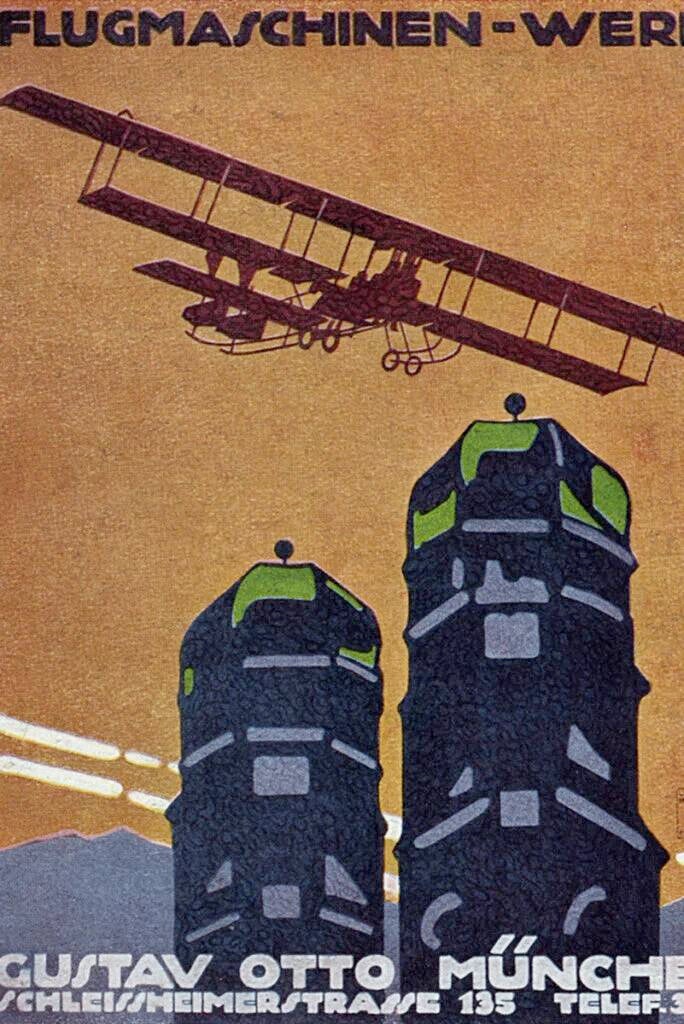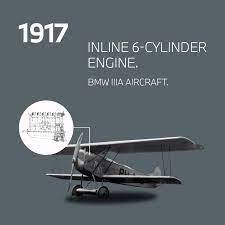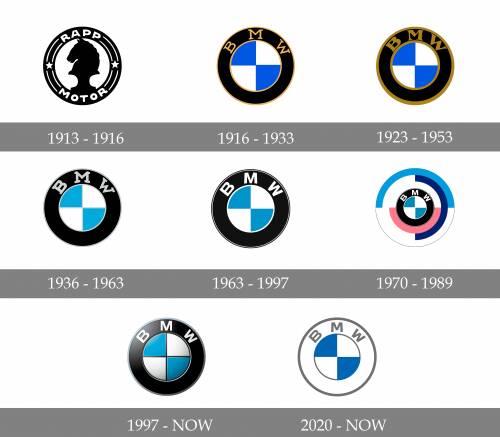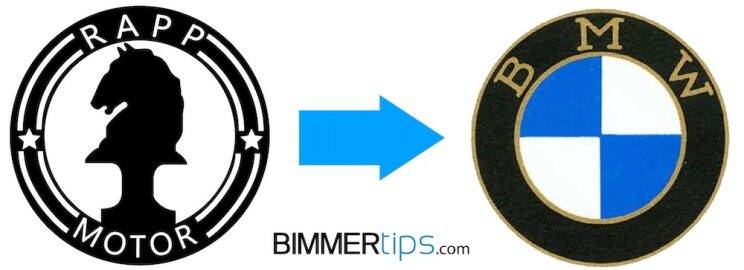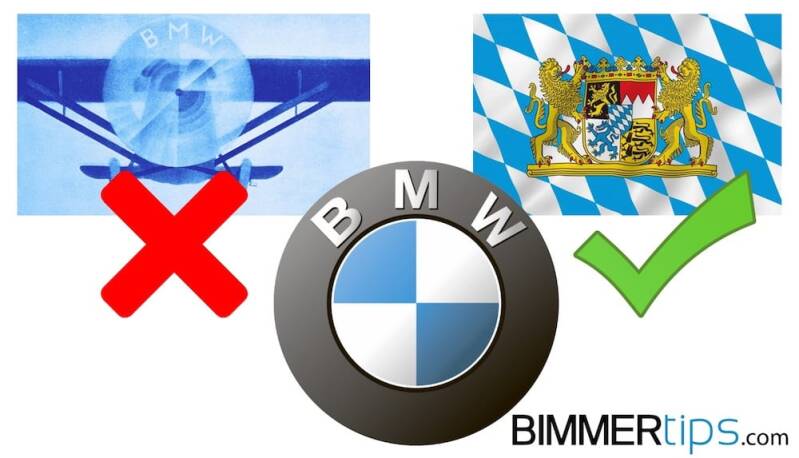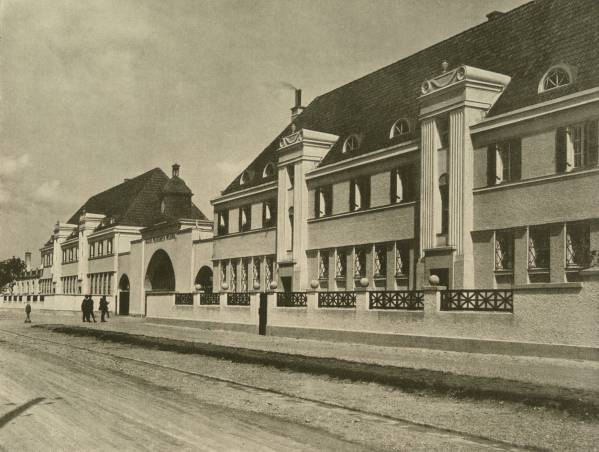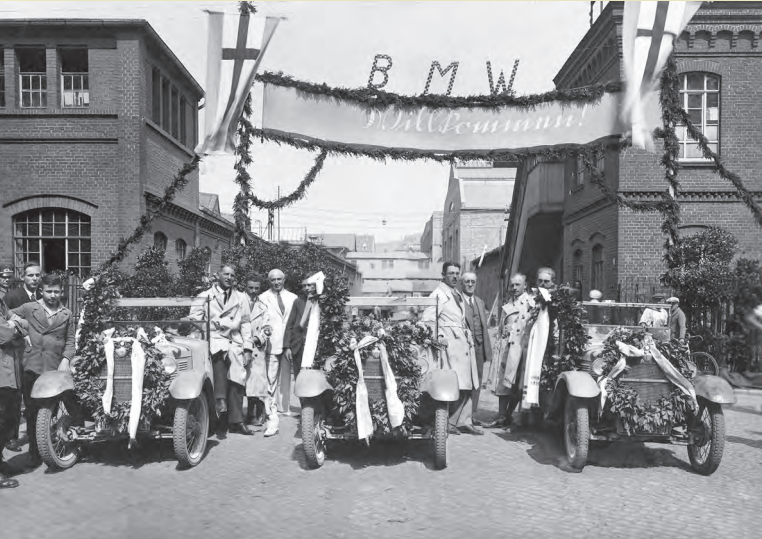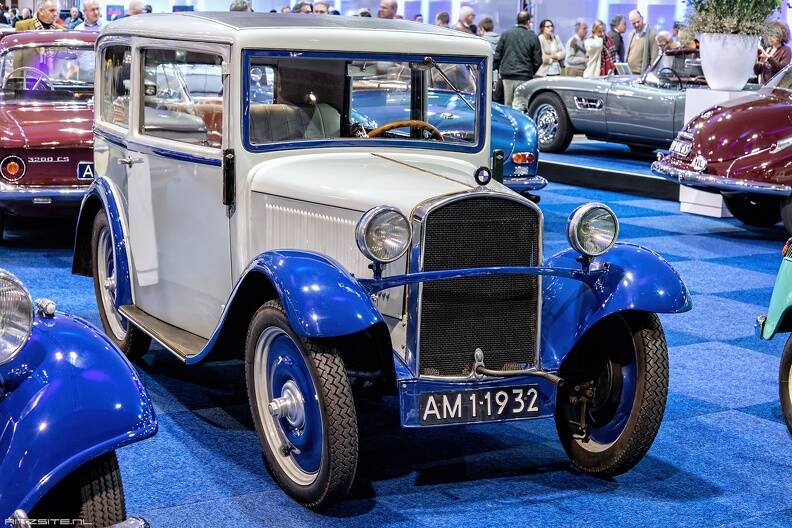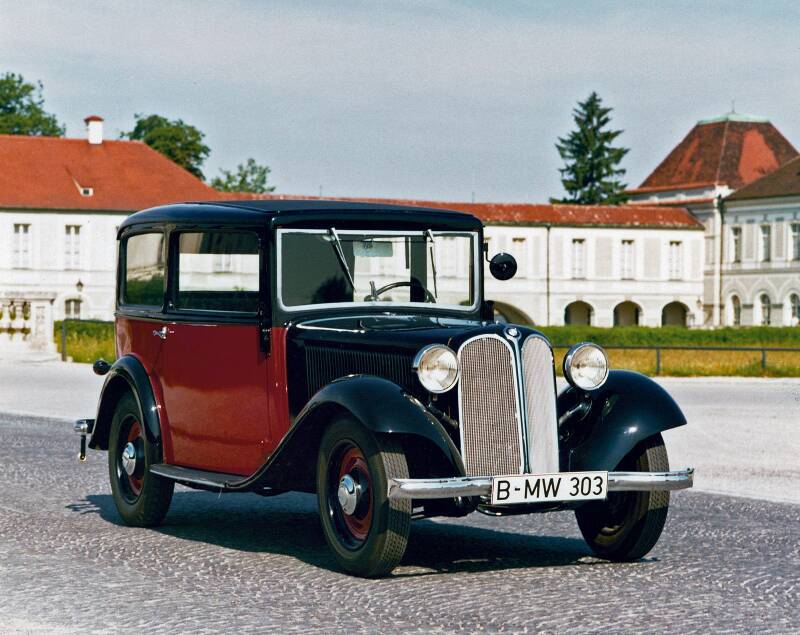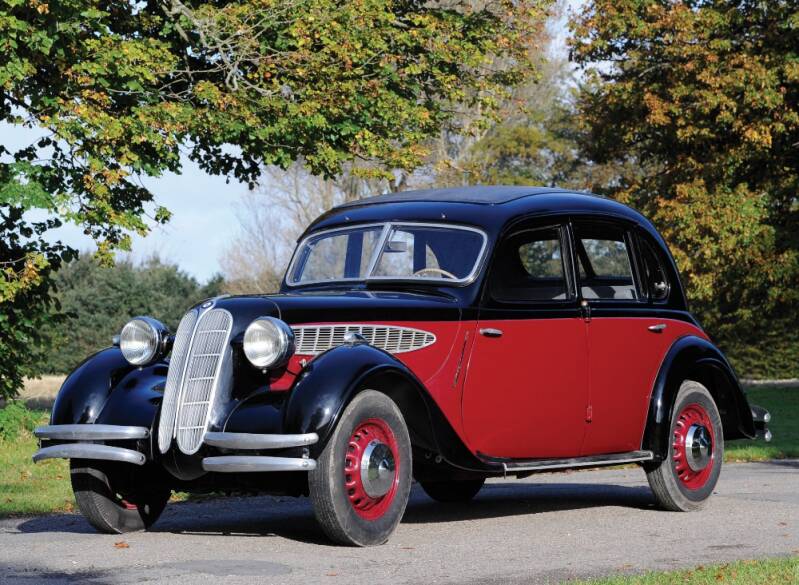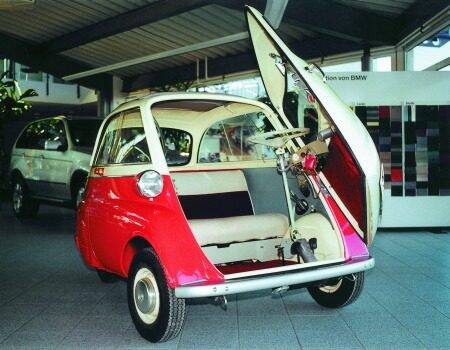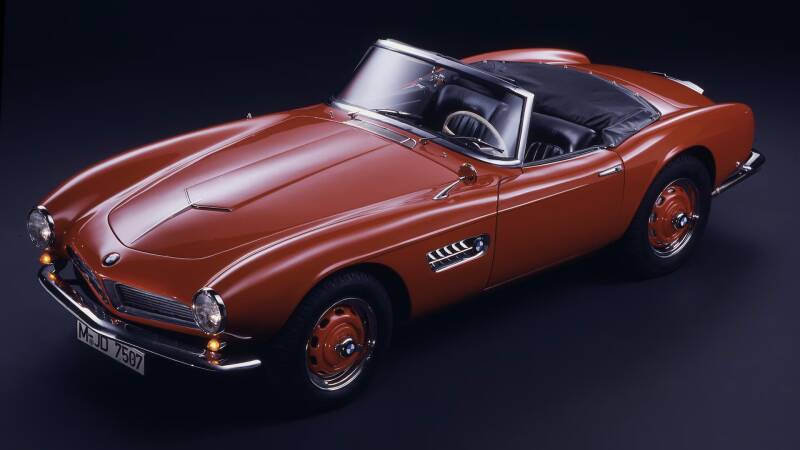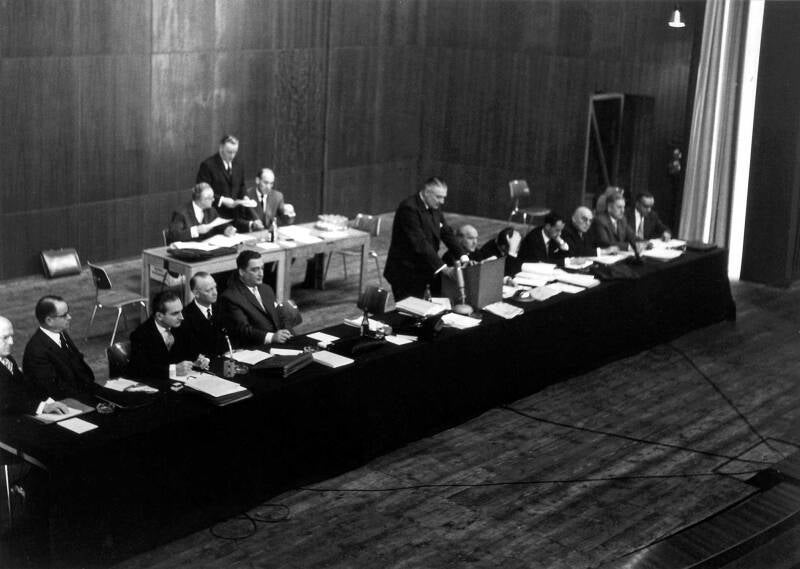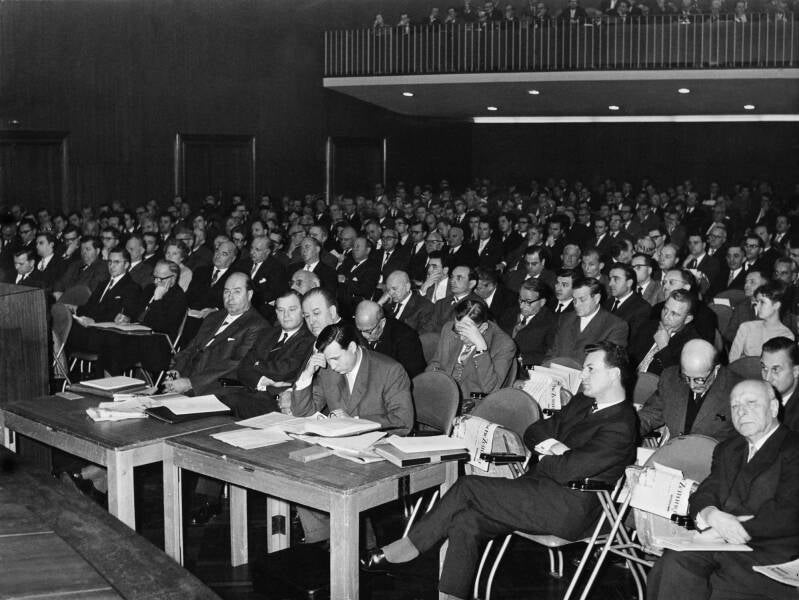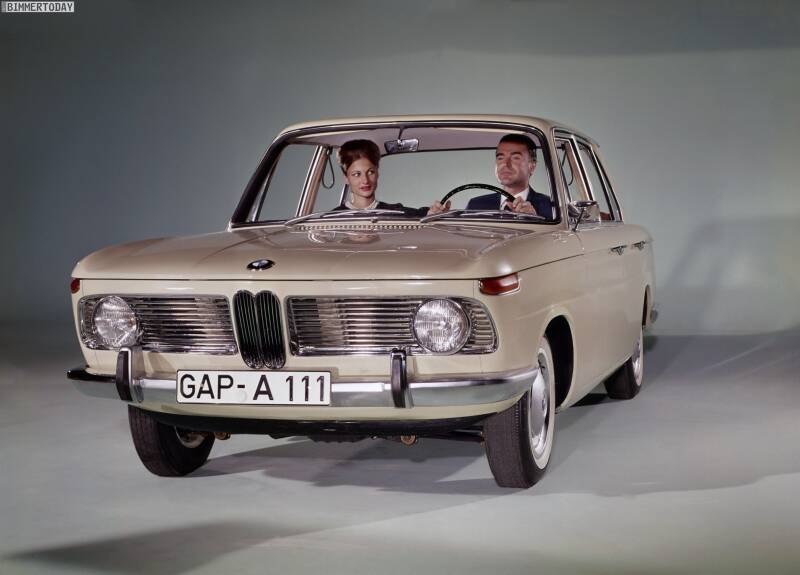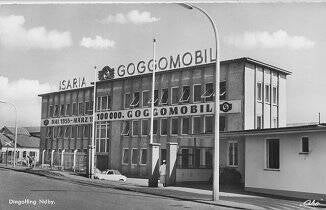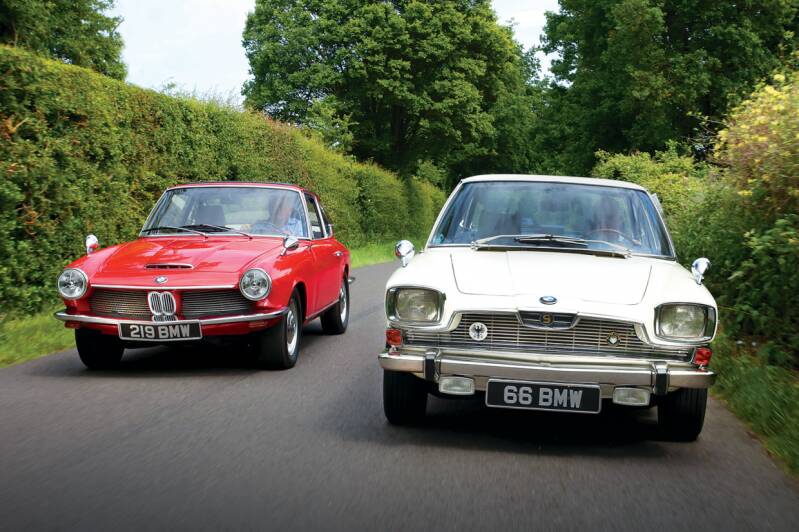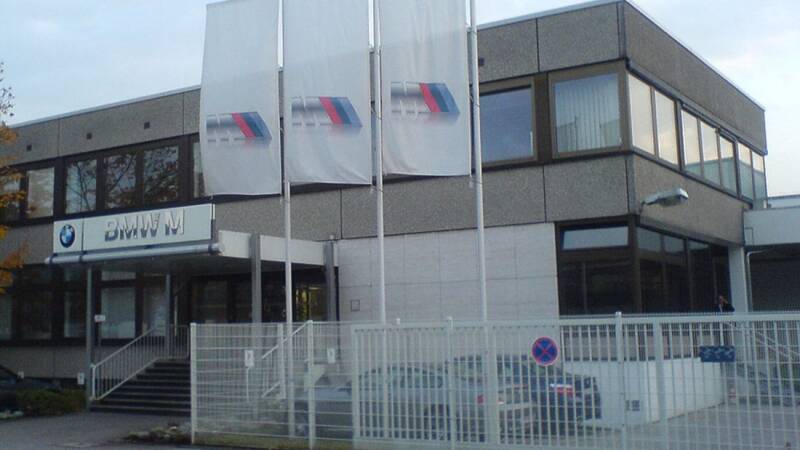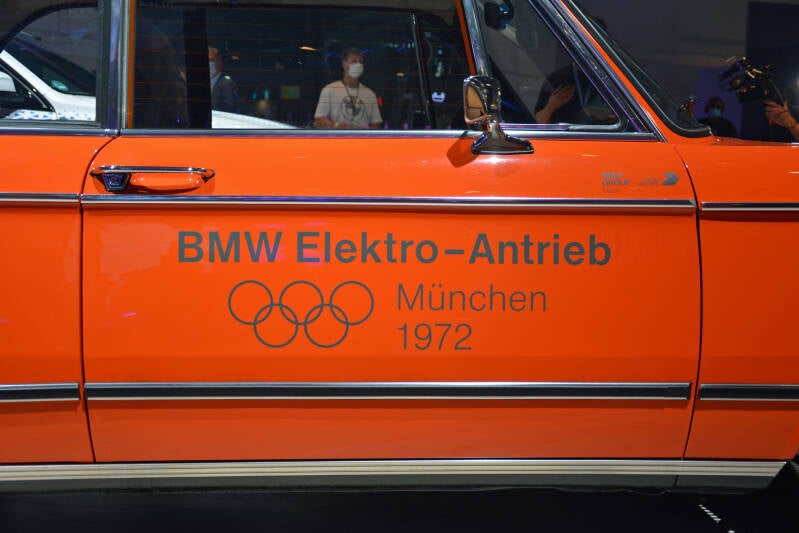History of BMW
BMW’s origins can be traced back to 1916, as a maker of aircraft engines.
Karl Rapp’s company Rapp Motorenwerke manufactures aircraft engines for Gustav Otto’s aircraft company (Gustav Otto Flugmaschinenfabrik). The two would soon run into financial difficulties after World War 1.
In 1916, under the stewardship of financier Camillo Castiglioni, Rapp Motorenwerke was renamed into Bayerische Motoren Werke (BMW, Bavarian Motor Company), but this BMW was not the same BMW that we know today.
From here onwards, the narration of BMW’s history gets a bit complicated.
Gustav Otto is the son of Nikolaus Otto, the inventor of the four-stroke engine used by nearly all cars today. Struggling with poor business, Gustav’s company was later renamed to Otto Werke and later on 7-March 1916, reorganised as Bayerische Flugzeug-Werke (BFW, Bavarian Aircraft Company), the predecessor to the present day BMW.
In 1919, Germany had lost World War I, and was barred by the Treaty of Versailles from manufacturing war planes. This severely affected BMW (Rapp) and BFW’s fortunes.
BMW, the one from Rapp Motorenwerke, had to resort to manufacturing braking systems for trains under license from Knorr-Bremse. In 1920, Castiglioni sold BMW to Knorr-Bremse, effectively making BMW a subsidiary of Knorr-Bremse, thus ending the lineage of the so-called ‘original’ BMW company.
In 1922, Castiglioni had assumed control of Gustav Otto’s BFW, and at the same time, Knorr-Bremse had little interest in engine manufacturing and sold the rights to the BMW name back to Castiglioni, who also took a small group of BMW employees with him.
Castiglioni wasted no time to reorganise BFW into BMW. BMW’s engine manufacturing business was restarted at BFW’s former production facility at the Oberwiesenfeld airfield in Munich, where BMW’s Munich plant and Group Headquarters office remains until today.
Thus, after this complicated genealogy, 7-March 1916, the date of Bayerische Flugzeug-Werke’s founding, was considered by BMW to be its date of birth.
To become more acquainted with the BMW brand, it’s important to take a look at the founders of the brand: Karl Rapp, Franz Josef Popp, and Camillo Castiglioni. All three founders are native to Europe – Rapp was born in Ehingen, Germany, Popp was born in Vienna, Austria-Hungary, and Castiglioni was born in Trieste, Austria-Hungary.
Rapp is credited as also being the founder of Rapp Motorenwerke, an airplane engine-making company, which is what BMW started as. Because of this, Rapp is often credited as being the “official” founder of BMW. Popp served as the first General Director of BMW and helped build the brand’s foundation. The final founder, Castiglioni went on to become the richest man in Central Europe and served as BMW’s financial officer.
The three founders collectively helped to grow BMW into what it is today, which we will touch upon in later sections.
Rapp Motorenwerke 1913
.
Karl Friedrich Rapp
One of the founders of BMW, Karl Friedrich Rapp was born on September 24, 1882 in Ehingen (Germany). After receiving an engineering education, Karl began working at the well-known automobile company Z st, and then worked as a technical director at Daimler-Benz AG. In 1912, he headed the production and sale of aircraft in one of the branches of Flugwerk Deutschland GmbH. However, the company did not exist for a long time - the shareholders decided to close the production, and the services of Karl Rapp were refused.
His passion for aviation leads Carl to the decision to establish his own company for the production of aircraft engines. October 28, 1913 the company Rapp Motorenwerke GmbH, engaged in the development and implementation of new technologies in the field of aircraft, and which, by chance, is located near the plant of Gustav Otto, the son of the inventor of the four-stroke engine Nikolaus Otto, "Otto-Flugzeugwerke". Gustav Otto and Karl Rapp join forces in the joint production of aircraft. The company is showing mixed success - Rapp's aircraft engines were considered unreliable by the military, and were often abandoned. With the outbreak of the world war, the company receives large defense orders, which fail because of management problems.
In 1917, Karl left the company, which, with the assistance of the government, in the course of a series of reorganizations, became known to the whole world as Bayerische Motoren Werke GmbH and began its triumphal march around the world
Gustav Otto Flugmaschinefabrik 1911
.
Gustav Otto
Gustav Otto was born on January 12, 1883, in Cologne, Germany. He was the son of Nikolaus August Otto, the inventor of the four-stroke internal combustion engine, and his wife, Anna. Gustav’s education is noted as Technical Colleges in Hanover, Karlsruhe and Munich.
In 1910, Otto obtained his pilot’s license and because of the profound impact that aviation had on Gustav, he was determined to develop his own aircraft engines. Gustav established his own company, the Gustav Otto Flugmaschinenwerke and his company quickly became one of the leading engine manufacturers in Germany, and it supplied engines for many German aircraft during World War I.
At the start of the war, Otto-Flugzeugwerke was supplying the German Air Force, but the production problems ended up being so great that government agencies urged the company to solve the issues.[1] The stress of wartime seemed to prove too great a burden for Otto who suffered health issues which led to financial problems with the company: In 1915 he was admitted to a Munich mental hospital for treatment of depression. During his treatment, the company languished to the brink of bankruptcy. Eventually, Otto was forced to resign and was offered a buyout that would compensate him for the business and also cover his medical bills. The assets were finally taken over by a consortium which incorporated them into Bayerische Flugzeugwerke on 19 February 1916. Otto therefore no longer had a stake in this company and instead turned his interest to a just previously founded (1 February 1916) independent Otto-Werke Flugzeug- und Maschinenfabrik GmbH.
.
Camillo Castiglioni
Camillo Castiglioni (22 October 1879 – 18 December 1957) was an Italian-Austrian Jewish financier and banker, and was the wealthiest man in Central Europe during World War I. Nicknamed "Austrian Stinnes", he was active in aviation's pioneering days and invested in the arts. Castiglioni was credited as being instrumental to the founding of what would eventually become BMW AG.
Castiglioni significantly influenced the development of BMW AG in its early years. The granting of a license agreement by Austro-Daimler to the Rapp-Werke in 1917 was partly attributable to Castiglioni. 1918 At Castiglioni's insistence the Wiener Bankverein acquired the majority of BMW's share capital. 1922 Castiglioni purchased all the equipment relating to engine construction, the associated know-how and the rights to the name "Bayerische Motoren Werke AG" from the BMW AG, which was renamed Süddeutsche Bremse AG. Castiglioni in turn renamed the Bayerische Flugzeugwerke to BMW AG and allowed the renamed company to continue production at the BFW plant. From the establishment of BMW AG until November 9, 1922 and then from 1924 to 1929, he was a member of the Supervisory Board and President of BMW AG. 1928 Deputy Chairman of the Supervisory Board.
His was one of the voices that urged BMW in 1928 to purchase the Eisenach Automobilwerke. Due to financial difficulties in 1929 he was obliged to surrender his holding of BMW shares to a consortium of banks (Deutsche Bank, Disconto, Bankhaus Hagen etc.).
A consortium led by the Deutsche Bank and the Diskonto-Gesellschaft purchased the BMW shares previously held by Camillo Castiglioni, who was facing problems of liquidity.
.
Dipl.Ing. Franz Josef Popp
Franz Josef Popp (14 January 1886 in Vienna – 29 July 1954 in Stuttgart) was one of three men responsible for the founding of BMW AG and the First General Director of BMW AG from 1922 to 1942.
A number of different candidates have been put forward as the “founders” of BMW AG. In the absence of Karl Rapp, Gustav Otto, Max Friz or Camillo Castiglioni the company would probably never have been born. However, Franz Josef Popp can lay claim to being the prime force in the development of the mobility company we know today. He was “General Director” of the company from its foundation until he was forced to relinquish his position in 1942.
After the success of the BMW IIIa aeromotor, it was decided that Karl Rapp's contract be terminated by the managing board of Rapp Motorenwerke. Popp was appointed as managing director of the company, while at the same time, the name of the company was changed from Rapp Motorenwerke GmbH to Bayerische Motoren Werke GmbH. This was intended to signal a new beginning to the outside world. Following its conversion into a joint-stock company, Popp was head of Bayerische Motoren Werke as chairman of the Board of Management, with the title of General Director.
At the end of the First World War, Popp was responsible for switching the young company from aircraft engine production to peacetime production. With this aim in mind, he worked towards creating a link with Knorr-Bremse AG, and from 1919 onwards, the factory started manufacturing Knorr brakes for the Bavarian Railway.
In 1922, Popp was responsible for transferring the most important patents, machinery and personnel for engine manufacture “to the umbrella of the Bayerische Flugzeugwerke AG” (formerly Otto Flugmaschinenfabrik), together with the company name Bayerische Motoren Werke AG.He was assisted in this endeavor by the Austrian financier Camillo Castiglioni. In this way, he was able to break free from Knorr-Bremse AG and start up engine construction once more.
.
Max Friz
Max Friz (October 1, 1883 – June 9, 1966)
Friz designed the first practical German aircraft engines in 1912-1913 while at Austro-Daimler. The engines had separate cylinders on the crankcase and an overhead camshaft driven by a vertical shaft and bevel gears. At the end of 1916 the young engineer Max Friz applied for a position with Rapp Motorenwerke. At that time Friz was still working for the Daimler engine company in Untertürkheim, near Stuttgart. However, he was frustrated because the chief engineer, Paul Daimler, ignored the suggestions of his young assistant on engine development. Faced with this situation, Friz remembered his former colleague, Karl Rapp. At first Rapp was going to turn down Friz's request; however, Josef Popp successfully intervened on Friz's behalf, because he recognized that Rapp Motorenwerke lacked an able designer.
At the Daimler engine company, Max Friz had tried in vain to develop an oversized, high-compression engine, but Paul Daimler had firmly committed himself to supercharger technology. Not until he had moved to Munich was Friz able to put his own ideas for a high-altitude engine into practice. In the space of a few weeks he designed a new aero-engine, which, with an innovative carburettor and a variety of other technical details, was superior to any other German aero-engine. Later, this engine would gain world renown under the designation "BMW IIIa".
BMW logo history:
In 1917 BMW purchased aircraft motor company RAPP, which included all of their business segments. BMW wanted their new logo to show lineage with RAPP by modifying their existing logo. The original RAPP logo featured a horse inside of a circle. BMW removed the horse and replaced it with the blue and white checker pattern to reflect the official Bavarian colors as seen on the Bavarian flag. This is fitting since BMW stands for "Bavarian Motor Works". The BMW letters replaced the RAPP letters inside the circle in a similar arrangement on the top of the logo.
Is the blue and white propellor a myth?
There is a rumor floating around that the BMW logo represents a spinning white propellor with the blue sky behind it. This rumor seems plausible since BMW has its roots in aircraft engines. An aircraft magazine featured a photo of a high wing aircraft with the BMW logo faintly behind the spinning propellor. Released in 1929, this magazine was more than 10 years after the iconic BMW logo came into existence. Although this was a clever marketing piece, it is nothing more. It does not reflect the true origins of the BMW logo design.
1911 - Founding of Gustav Otto Flugmaschinenfabrik GmbH
1913 - Founding of Rapp Motorenwerke GmbH
1916 - Gustav’s Otto Flugmachinefabrik was reorganised as Bayerische Flugzeug-Werke (BFW, Bavarian Aircraft Company)
1917 - Rapp Motorenwerke GmbH renamed to Bayerische Motoren Werke GmbH
1918 - BMW GmbH was converted into BMW AG (public limited company)
1920 - 1922
In 1919, Germany had lost World War I, and was barred by the Treaty of Versailles from manufacturing war planes. This severely affected BMW (Rapp) and BFW’s fortunes.
BMW, the one from Rapp Motorenwerke, had to resort to manufacturing braking systems for trains under license from Knorr-Bremse. In 1920, Castiglioni sold BMW to Knorr-Bremse, effectively making BMW a subsidiary of Knorr-Bremse, thus ending the lineage of the so-called ‘original’ BMW company.
In 1922, Castiglioni had assumed control of Gustav Otto’s BFW, and at the same time, Knorr-Bremse had little interest in engine manufacturing and sold the rights to the BMW name back to Castiglioni, who also took a small group of BMW employees with him.
Castiglioni wasted no time to reorganise BFW into BMW. BMW’s engine manufacturing business was restarted at BFW’s former production facility at the Oberwiesenfeld airfield in Munich, where BMW’s Munich plant and Group Headquarters office remains until today.
Thus, after this complicated genealogy, 7-March 1916, the date of birth.
1922 - The company relocated to the production facilities of BFW at Munich’s Oberwiesenfeld airfield. The main plant and the headquarters of the BMW Group are still at this location today.
1923 – At the German Motor Show in Berlin, the BMW R 32 is presented: the first motorcycle produced under the brand, developed under the management of Max Friz, powered by a horizontally opposed twin-cylinder, four-stroke Boxer engine.
1928 - BMW takes over automaker Fahrzeugfabrik Eisenach in Thuringia where the Dixi 3/15 PS small car is manufactured as a licensed version of the British Austin Seven. This makes the company a manufacturer of automobiles.
1929 - The first BMW 3/15 PS rolls off the assembly line in the production building rented from coachbuilder Ambi-Budd at the old Berlin-Johannisthal airfield. Later the production was in Eisenach.
1932 - BMW ends the licence agreement with Austin and soon afterwards presents the company’s first in-house automobile design: the BMW
3/20 PS with a new four- cylinder engine and a two-door all-steel body.
1933 - The BMW 303 is presented at the International Motor Show in Berlin as the brand’s first six-cylinder automobile and also the first model to be styled with the BMW signature kidney-shaped radiator grille.
1936 - The BMW 326 is presented at the International Motor Show in Berlin as the new mid- range model.
The two-litre BMW 328 sports car is presented in public for the first time racing in the Eifel Race at the Nürburgring.
1939 - BMW AG takes over all the shares in Brandenburgische Motoren Werke GmbH in Berlin-Spandau. BMW had already been cooperating with the company on the development of air-cooled aircraft engines.
1945 - The US military government ordered the BMW plants in Munich and Allach to be dismantled. This meant that BMW lost the power of disposal over its assets until 1949; in Allach, this loss of control in fact lasted until 1955. A large proportion of the intact machines were dismantled at the Munich-Milbertshofen plant and shipped all over the world as reparations.
1948 - Motorcycle production is started up again in Munich. A BMW R 24 powered by a single-cylinder engine is manufactured there as the first vehicle from BMW AG in the post-war era.
1954 March - The BMW 502 presented at the Geneva Motor Show is powered by an eight-cylinder engine, the world’s first V8 all-alloy engine to be fitted in a volume-produced automobile.
1954 October - BMW acquires the licence to build a two-seater microcar with a front door from Italian manufacturer Iso. The BMW Isetta has a lot of refined details, it is powered by BMW motorcycle engines and marketed as a “Motocoupé”, the best-selling model sold by the brand during the 1950s.
1955 January - A new model series is presented at the Brussels Motor Show with the BMW R 50 and the BMW R 69 manufactured with a full swing arm suspension. The series defined the BMW motorcycle programme until 1969.
1955 September - The BMW 507 made its first public appearance at the International Motor Show in Frankfurt. This roadster had been penned by designer Albrecht Graf Goertz with a 150 hp eight-cylinder engine and it is celebrated in the press as the “Dream from the Isar”
1959 June - The Board of Management of BMW AG presents the new BMW 700 Coupé to international journalists at a press launch. This car was to lay the foundations for profitable large-scale production of automobiles.
1959 December - At the Annual General Meeting of BMW AG, a group of small shareholders prevents the takeover by Daimler- Benz AG. Major shareholder Herbert Quandt decides to make a bigger commitment which secures the independence of BMW.
1961 - The BMW 1500 celebrates its world premiere at the International Motor Show in Frankfurt – the start of the trailblazing success of the “New Class”.
1967 - BMW AG takes over the company Hans Glas GmbH at Dingolfing, which produces a number of vehicles including the Goggomobil microcar, numerous other models and agricultural machinery.
1972 - BMW Motorsport GmbH is established. It is responsible for all motor-sport activities and for the development of race cars and particularly sporty automobiles licensed for use on roads.
Jochen Neerpasch, Founder of BMW M








